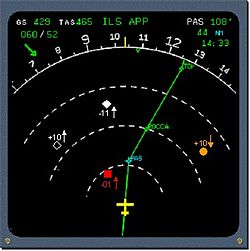Jets' near-miss avoids ascent into chaos
 A major investigation has been launched to try to decipher how two Qantas jets with hundreds of passengers between them came within a mere 215 metres of each over the southern coast of Australia.
A major investigation has been launched to try to decipher how two Qantas jets with hundreds of passengers between them came within a mere 215 metres of each over the southern coast of Australia.
The near miss could have been exponentially worse if the airbus pilots had not initiated evasive manoeuvres.
According to newspaper reports Qantas flight 576 was heading from Perth to Sydney when the pilots received an alert from the traffic collision avoidance system and began to climb. At the same time, Flight 581 was heading from Sydney to Perth at 38,000ft when its pilots asked for and received permission to climb.
The permissions, allegedly from Airservices Melbourne Air Traffic Control centre, were granted and then quickly rescinded when the error was detected, but not before the alerts were activated.
Graeme Vincent, a passenger heading to Sydney said the pilots had to apply “quite extreme power” to their engines to avoid colliding with the opposing jet.
“I knew something was wrong and I was quite nervous,” Mr Vincent said.
Meanwhile, on the Perth-bound plane, noting seemed amiss and passengers all remained calm – oblivious to the near-death experience they were having at the time.
Qantas confirmed the incidents, highly praising its pilots for using their trained intuition and following instructions to avoid disaster.
“These pilots have years of experience and handled the situation exactly as they have been trained to,” Qantas chief pilot Phil Green said.
The Australian Transport Safety Bureau labelled the near-miss as a serious event, warranting investigation.
The ATSB will review and analyse radar and audio data, as well as its air traffic control procedures. Controllers and flight crew will be interviewed, it is expected the investigation will be completed by late 2014.
There were also some non-biological contributors to the situation turning out relatively well – with praise deserved by the Traffic Collision Avoidance System. The TCAS has provided an almost fail-safe backup for pilots in such circumstances. TCAS is fitted to all commercial passenger planes to monitor nearby flights, whose information is shown on the pilots' flight displays.








 Print
Print